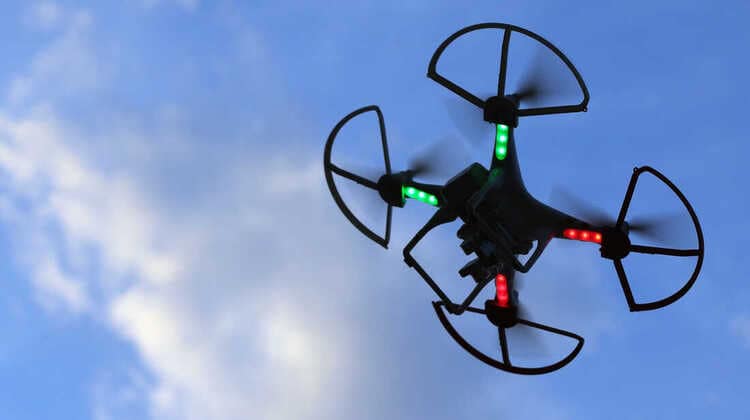Can I Fly A Drone In My Neighborhood?
In recent times, drones, or unmanned aerial vehicles (UAVs), have soared in popularity, captivating hobbyists and professionals alike with their versatility and capabilities. However, their presence in residential neighborhoods has sparked debates concerning privacy, safety, and noise levels, prompting the need for clear guidelines and best practices. Here, at The Wright Experience, we address these concerns and provide insights into safely navigating drone flights in residential areas.
Navigating Legal Boundaries
Before embarking on drone adventures in your neighborhood, it’s imperative to understand the legal framework governing UAV operations. While flying drones in residential areas is permissible, adherence to local regulations and respect for privacy and safety guidelines are paramount. Drawing from our expertise, we shed light on crucial aspects of drone regulations:
Registration Requirements: Prior to takeoff, ensure your drone is registered with the appropriate aviation authority, such as the Federal Aviation Administration (FAA). Registration not only fosters awareness of regulations but also aids authorities in monitoring and managing drone activity.
Local Regulations: Familiarize yourself with local drone regulations, which encompass altitude limits, no-fly zones around airports and sensitive areas, and protocols for handling privacy concerns. Compliance with these regulations is essential to avoid legal ramifications.

Essential Safety Tips for Drone Flights
Embarking on drone flights in residential areas demands a vigilant and responsible approach. Here are some indispensable safety tips to ensure smooth and secure operations:
Visual Monitoring: Maintain visual contact with your drone at all times to facilitate effective control and navigation, minimizing the risk of accidents and ensuring a seamless flight experience.
Neighbor Communication: Foster open communication with neighbors by seeking their approval before initiating drone flights. Respecting their concerns and property boundaries cultivates amicable relations and minimizes potential conflicts.
Safe Distancing: Adhere to safe distances from individuals, buildings, and objects during drone operations to mitigate the risk of accidents and prevent inadvertent intrusions or disturbances.
Weather Awareness: Prioritize safety by conducting pre-flight weather checks and avoiding drone operations in adverse weather conditions, such as high winds or rainfall, which could compromise flight stability and safety.
Avoiding Hazardous Areas: Exercise caution and steer clear of hazardous areas, such as high-voltage electrical lines, to prevent signal interference and mitigate the risk of collisions or accidents.
Identifying Suitable Flying Locations
Selecting appropriate flying locations is integral to ensuring a seamless and enjoyable drone-flying experience. Here are some recommended locations endorsed by our experience:
FAA-Approved Areas: Opt for FAA-approved locations vetted for safety and compliance with regulations, offering hassle-free drone operations within designated boundaries.
Public Parks and Recreation Areas: Explore the vast expanse of public parks and recreational areas, characterized by expansive vistas and minimal obstacles, ideal for capturing stunning aerial imagery.
Backyard Flights: Leverage the convenience of backyard drone flights while maintaining neighborly relations through open communication and adherence to privacy considerations.

Addressing Neighbor Drone Encounters
Encountering drones operated by neighbors necessitates a tactful and diplomatic approach to address privacy and safety concerns effectively:
Open Dialogue: Initiate a respectful dialogue with neighbors to express concerns regarding drone flights over your property, fostering understanding and cooperation in addressing shared concerns.
Authorities Intervention: In persistent cases of neighbor drone incursions, engage relevant authorities, such as the FAA, to enforce regulations and address airspace violations, safeguarding privacy and property rights.
Legal Recourse: Explore legal avenues, including filing complaints or lawsuits for invasion of privacy or trespass, as a last resort to mitigate neighbor drone-related disputes.
Frequently Asked Questions (FAQs)
To address common queries concerning drone operations in residential areas, we offer clarifications on registration requirements, legal actions, and privacy concerns:
- Drone Ownership Responsibility: Apologize and seek permission from homeowners if your drone crashes on their property, demonstrating accountability and respect for property rights.
- Licensing Requirements: Licensing requirements for drone operations vary based on factors such as recreational or commercial use. Compliance with local regulations and licensing mandates ensures lawful drone operations.
- Legal Actions Against Neighbor Drones: Shooting down neighbor drones constitutes illegal and potentially harmful behavior. Opt for lawful avenues, such as authorities intervention or legal recourse, to address neighbor drone-related grievances.

In Conclusion
Flying drones in residential areas presents opportunities for exploration and creativity but demands adherence to regulations and responsible practices. By adopting a proactive and considerate approach, drone enthusiasts can navigate the skies safely, fostering harmonious coexistence with neighbors and preserving privacy and safety in residential communities.

